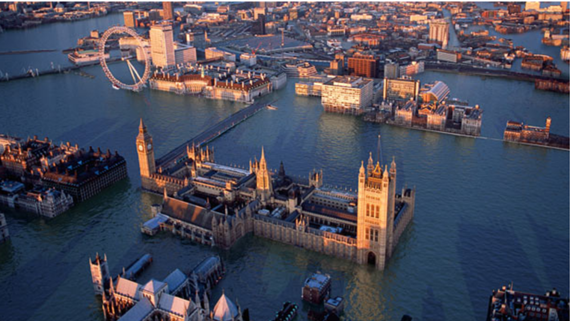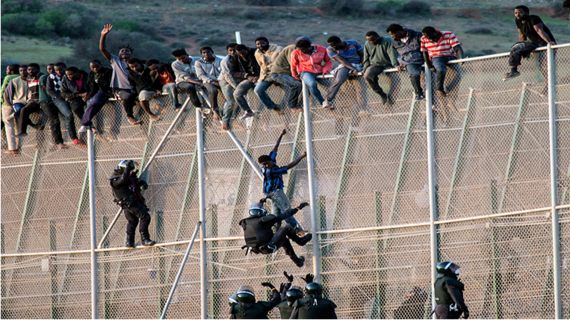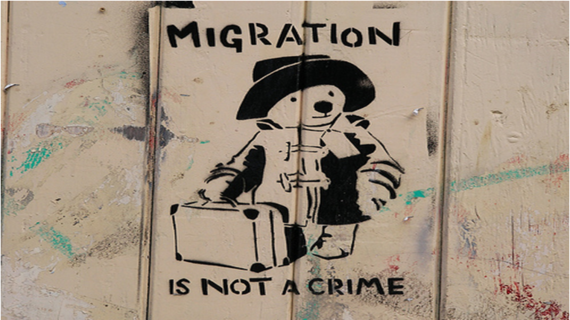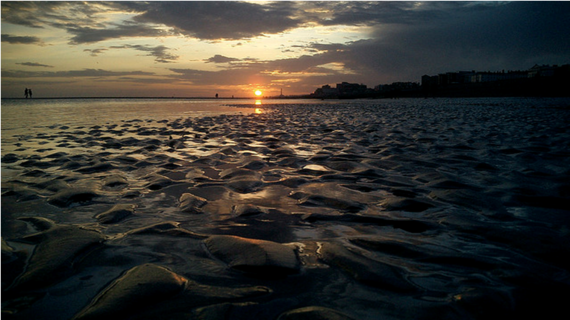With heads turned towards the Southern hemisphere for recent climate action, G20 Brisbane and COP20 Lima, I take a moment to reflect on climate messages back in the Northern Hemisphere.
In my last blog I rattled through the old ways of communicating climate change.
These less successful past ideas on how to communicate climate change are now being replaced- apart from one..
Back To The Apocalypse
Remember that approach? Messages saying that climate change will cause dark stormy seas to rise up and submerge your local high street to create the Underwater Kingdom of Chingford. AND that's if you're lucky! As the extreme hurricanes, crippling droughts and pandemic levels of tropical diseases could ravish your town before the menace of the waves reaches you.
One message which came to light during the age of apocalypse was that a human tide of migrants would flood from the 'developing world' into Europe and the US to accompany a catastrophic sea level rise. Orwellian representations of social chaos were circulated across the news and in politics which speculated on our dire climate future. These messages invoke speculation which depict hordes of desperate migrants climbing en masse over the Mexico-US border fence as well as spreading across the EU from the Mediterranean border to the UK.
This story of climate migrants flooding into 'developed countries' stems from the statistic of 200 million climate refugees by 2050 produced by Myers in 1995.
Despite the waning of the apocalypse headlines when communicating climate change the topic of migration chaos has stuck within news and politics. Representatives from across the political spectrum reference this idea of hordes of migrants threatening the stability of the nation.
It's very strange that this remnant of the apocalypse has stuck while others have been cast aside. And this one isn't any less ludicrous, countless research has shown that we are not looking at catastrophic mass migration to the US and Europe because of climate change.
Smaller scale climate catastrophes such as the US Dust Bowl has shown very different patterns of human movement than preached by politicians. Climate change is very likely to impact upon the movement of people but not in the way we have been told.
Migration As A Threat
Many a researcher has touched upon the topic of presenting these future migrants as a threat. When these stories are told they often present the migrant as helpless, desperate and poor and their arrival would lead to a catastrophic strain on national resources that would in turn cause the state to collapse and implode under the burden.
Migrants are presented en masse as a faceless tide of humans, when climate change is connected with mass migration that group of migrants is seen as vast and unquantifiable. All individuality of these migrants has been thrown away and there is a proposed clear causal link between climate change and migration.
Migration As Adaptation
The suggestions of migrants from the developing world swamping borders of the EU and USA have a very determinist view of the future. These predictions do not appreciate the huge complexity of future climate change and the even larger complexity of humans.
Throughout the history of humanity we have migrated as a way of adapting to changes. We are a very mobile species and have successfully spread and adapted to live in a range of environments across the globe.
The negative framing of migration in response to an environmental threat has been presented in the context of our more settled lifestyles. Since the development of cities and settlements we tend to be less mobile. Our social norms now include investing large amounts of our wealth into securing our settlement and improving our livelihood by enriching the spaces around us.
Migration should not just be considered to be inherently bad thing or a last resort to escape a bad area. Migration should be viewed as a potentially legitimate way of adapting to a changing climate and increasing resilience to environmental stress.
Climate change is not only causing increasing pressures on migration but also entrapment. Under certain environmental stresses people can become trapped in communities and migration may not be a feasible option.
There And Back Again
Migration is a very individual process, certain demographics within communities rather than the entire population tend to move. This could be young men who migrate to cities in order to gain employment and diversify the household income which may be farming.
Time is also an important factor; a large amount of migration tends to be temporary. It could even be seasonal as job demand in a particular sector massively increase then decline, such as during harvests.
Vast amounts of research have shown that current migration in response to climate stress tends to be within countries rather than crossing international borders. So it looks like that predicted human tide could be more like a trickle, as displaced persons tend to want to stay in their own country where they have much more social capital and connections.
The Tide Is Going Out
Clinging onto a narrative that portrays climate migrants as a faceless horde spreading across nations, devouring their resources and causing civil catastrophe has alarming resemblance to biblical plagues has dangerous consequences.
The negative connotations of 'climate migrants' has spread across the political spectrum to rally action on climate change. This story of mass migration has very little basis in academia and the link between climate change and migration is far more complicated than presented in these perspectives.
Studies of smaller scale climate disasters has shown us that migration is an extremely complicated process.
Who moves, for how long and where they move are important questions we should be asking.
Migration can be a legitimate way of adapting to a changing climate and we need to start deconstructing the perception and fear of mass migration due to climate change.
These are just a few of the arguments used to act as a breakwater to the Human Tide story. We should change the way we think about these scenarios and recognise the intricately complicated human processes entangled with a changing climate rather than being drawn into a racialised generalisations of climate induced mass migration.






